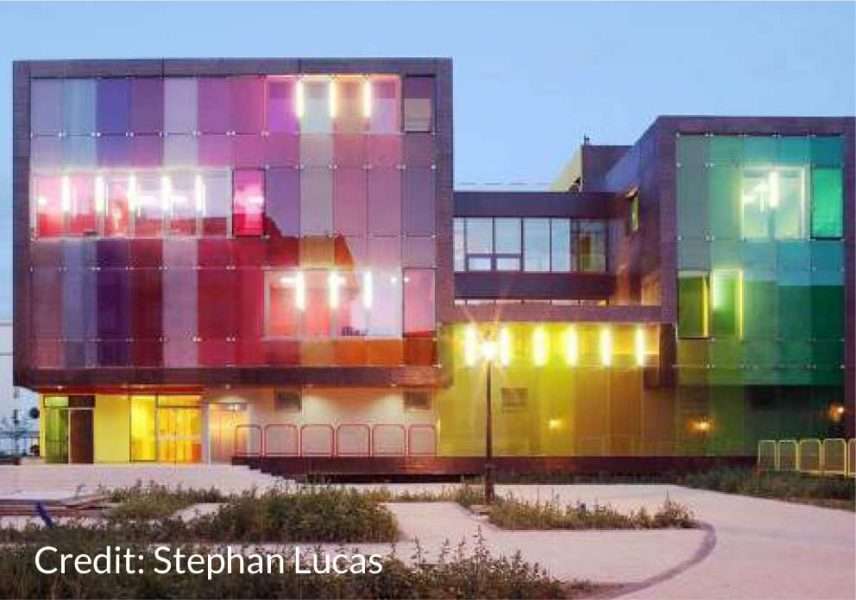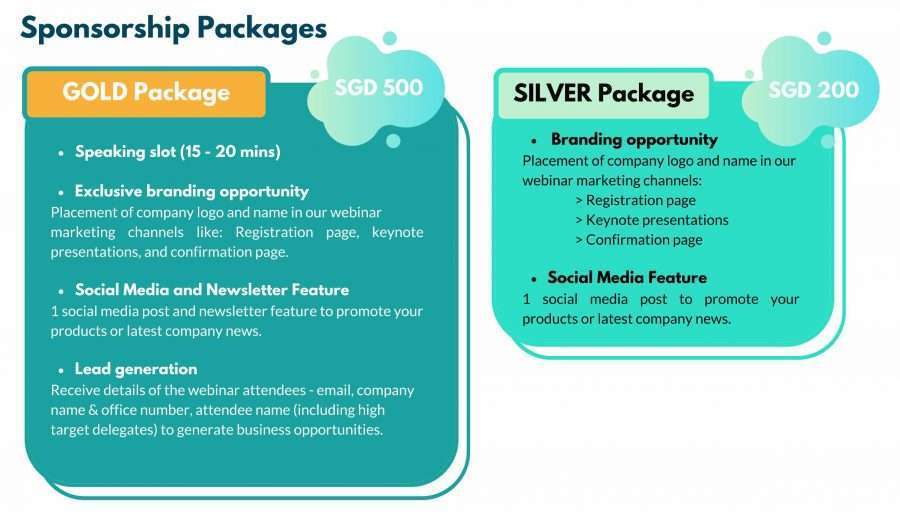The Allure of Glass in Architectural & Interior Design

Re-Invention of Glass
Used in the construction of almost every building in the world, glass is one of the most exceptional building materials, whose applications are as limitless as one’s imagination.
Glass also works alongside well with all materials, be it natural and artificial materials, making it perfect for architectural and interior design. Not only that, it blends harmoniously and seamlessly with other common building materials such as steel, stone, concrete, and wood materials, resulting in elegant modern contemporary architecture. Most importantly, glass is recyclable. The circular life cycle allows used glass to be broken down and reformed into new glass materials, which helps architects and manufacturers to become more resource efficient.
RE – INVENTION
“A product that has been re-created in a different form, so much that it appears entirely new, with a different purpose”.

As the environmental crisis worsens, a heavier spotlight is placed on the construction industry – contributing about 50% of the global landfill wastes. To curb this, the circular economy approach was initiated to provide a structure and system for architects and manufacturers to optimize recycled materials and construct sustainable infrastructures while increasing their resource efficiency.

However, since the circular approach was initiated, the majority of the recycled products created cannot be recycled again, due to lamination and glazing. The sustainability of these construction materials is an ongoing task which many organisations are trying to work towards a closed-loop recycling process, where all recycled products remain recyclable. In this issue of Glasstech Asia News, innovative examples of closed-loop recycled products will be shared.
RECYCLED GLASS IN ARCHITECTURAL DESIGN
Recently, a deflt research has discovered that only five percent of glass from buildings are recycled. Despite its recyclability, building glass waste rarely gets recycled into new glass products. Instead, it is often grouped together with other unwanted building materials and thrown into landfills.
“IN MY EXPERIENCE, IT IS STILL NOT EASY TO RECYCLE GLASS. HOWEVER, THE MAIN BENEFIT WHEN USING GLASS IS COMFORT, VISUALITY, NATURAL LIGHT, AND ELEGANCE OF DESIGN. ”
– Tuomas Silvennoinen, Chief Architect of PESARK Architects
Glass is a sustainable material that can be recycled an unlimited number of times. Made of copious natural raw materials, recycled glass brings in many benefits for architects, designers, and manufacturers.
Now, with the growing awareness of sustainability, various sectors in the industry are putting in more effort to create new products.
BIO GLASS
Produced in several shades, bio glass is made out of conventional glass bottles, creating a distinct yet unique design that showcases various shapes of glass within a slab. With no colorants and no additives, bio glass retains and reflects the original colour of the glass waste that it is made of.

According to Glass Packaging Institute, “Glass can be continuously reprocessed without a drop in quality or purity”. It is an advantageous ecological material that has little environmental impact and does not compromise on aesthetics, which is ideal for architects and designers.
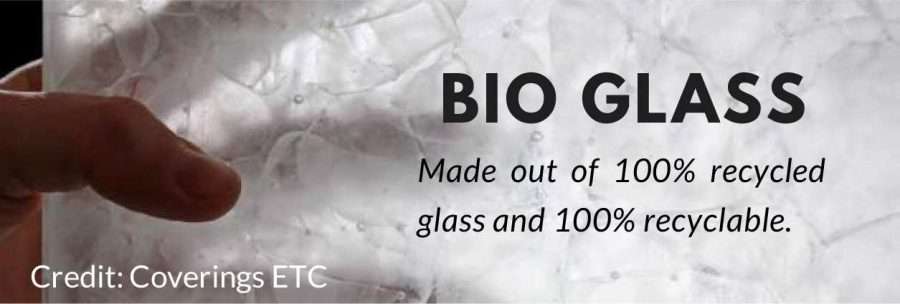
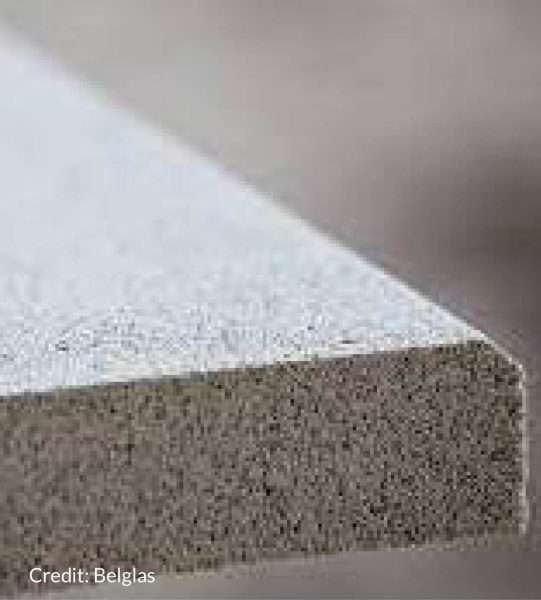
The marble-like surface is often used for walls, floors, and other applications. It is stain, fire, chemical resistant and has a Silver Cradle to Cradle Certification, which makes it a strong competitor to contemporary glass products. Not only is it a cost-effective option, it significantly reduces the consumption of glass.

Created with aerated granules fused together from recycled glass, REAPOR glass is ecofriendly and are high performance noise absorbers. With a solid non-combustible layer, it is fibre-free, lightweight, and foraminous, making it a great panel option for both indoor and outdoors.
GLASS AGGREGATES
Every year, a strong demand is placed on the fundamental aggregate materials used in the concrete industry. An estimated amount of 165 million tonnes of aggregate is used each year, revealing an opportunity for alternative eco-friendly aggregate sources to be developed.
Capitalising on this opportunity, glass aggregates are invented to reduce the heavy reliance on other natural aggregate sources.
They are recycled glass that are be used in construction products such as walls, window glazing and fiberglass insulation. With quirky decorative elements, glass aggregates also accentuate the design aspect of the product and differentiates itself from others.
Furthermore, it brings about other benefits as well, such as:
- Higher levels of eco-sustainability throughout production process
- Improved resistance to drying shrinkage and abrasion effects
- Increased resistance to higher temperatures
- Minimal costs in extraction of natural aggregate sources

Sydney Mainster, Director of Sustainability at Durst Organization

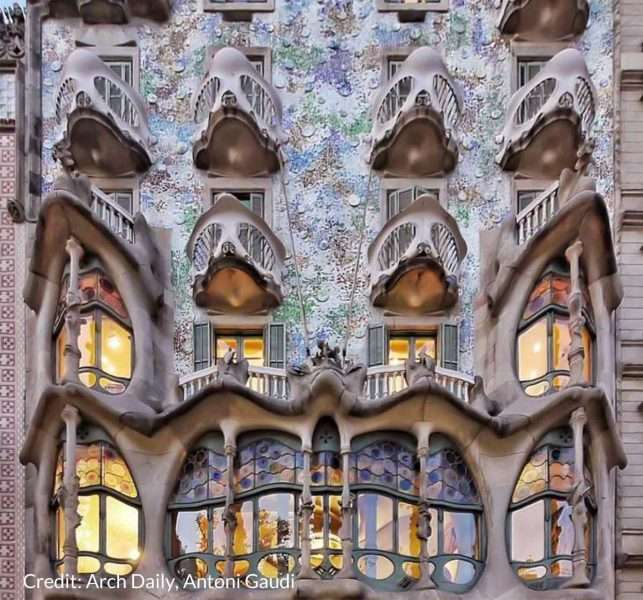
GLASS’S ROLE IN ICONIC TOURISM ATTRACTIONS

GLASS ARCHITECTURE
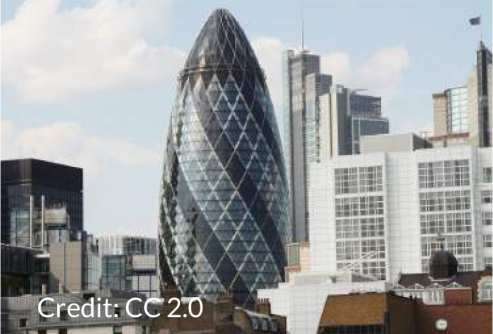
As an integral aspect of tourism, architecture plays a critical role by channeling a propitious reciprocal effect on the country’s economy and influences visitor-ship. Within these past few years, the ever-changing tourism industry revolutionised and saw a change in consumer preferences. It was discovered that tourists have a newfound interest in modern architecture which features heavily on glass design.
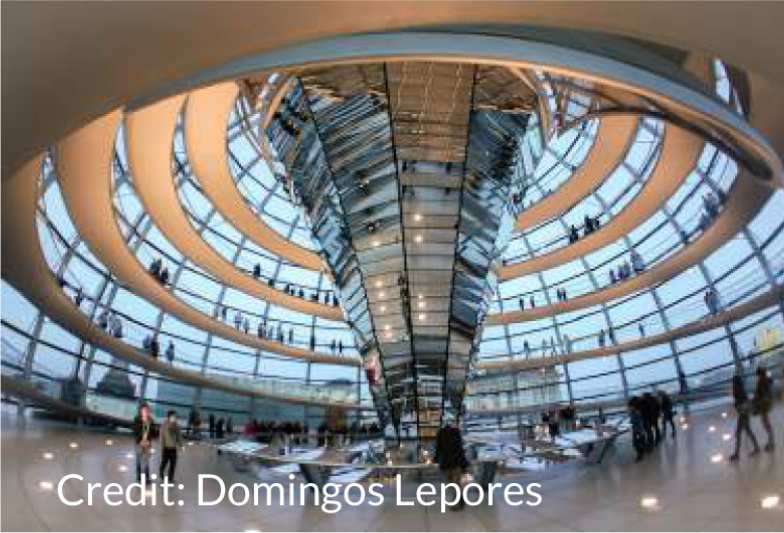
Used in every building, glass now forms the backbone of modern architecture. In terms of versatility and aesthetics, glass has proven to be a strong contender, holding an exquisite balance of strength and functionality.

Additionally, breaking down numerous barriers – in terms of heat, space, functionality, and more recently, environmental obstacles, glass perfectly supports great architecture, placemaking it to be a destination of its own.
Examples of iconic glass architecture can be found all around the world, demonstrating the critical role of which glass plays.
FRANK GEHRY’S IAC BUILDING
Despite being only 10 stories tall, IAC belies its actual height and gives off the impression of being tall through the delicate design of optimizing twists and layers, along with its curvaceous glass forms.
Straying away from the conventional design of buildings, Frank Gehry created a mesmerising look that leaves one to imagine. The most common impression is a boat in the artic, where the curved form of cell units giving off an appearance of sails skinning over in the wind with fading double-glazed windowpanes from clear to white that seemed like an iceberg.
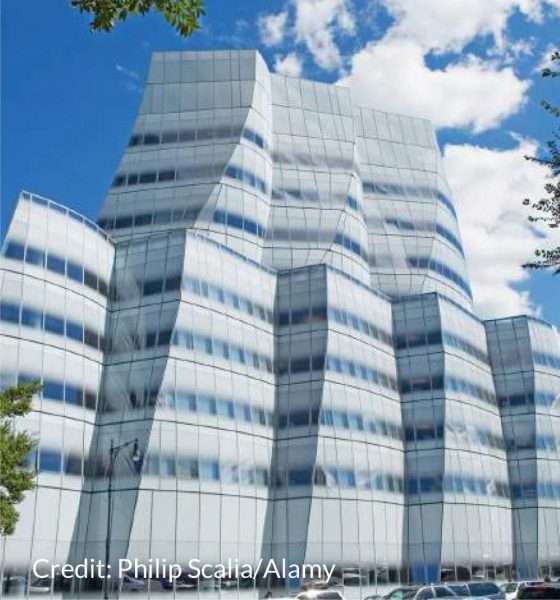
SPORTS AND LEISURE CENTER IN SAINT-CLOUD BY KOZ ARCHITECTES
The Youth Center and Sports Complex, an urban landmark in a residential neighbourhood, perfectly distinguishes itself as an iconic center for children, with bright hues of colours illuminating from it.
Cleverly designed, the rainbow wonderland clearly articulates the glazed volumes to contrast spaces and identifies areas with the spectrum of colours. Moreover, the use of colours promotes a vibrant environment for the children and introduces them to the building’s architecture with clear differentiation of each area.
MAISON HERMÈS BY RENZO PIANO BUILDING WORKSHOP
A showstopping icon in the middle of the famed Ginza shopping district, Maison Hermès comprises of 13,000 self-supporting glass blocks that reflect the sunlight in the daytime and casts out the store’s internal light at night, earning its name “Magic Lantern”.

GLASSTECH ASIA
As part of the world’s prominent trade network, Glasstech Asia is the leading BAU trade fair which serves as a highly connected community/platform for the glass industry in Southeast Asia. Bringing together international experts specializing in all sectors of glass such as manufacturers, processors, and suppliers of glass machinery and accessories, Glasstech Asia provides an exclusive opportunity to meet with leading regional buyers from major markets in the ASEAN region, and network with top international connections from the BAU network. Experience strong growth in clientele base, brand exposure, networks, sales, through high profiled meetings and establish a strong foothold in one of the most dynamic and profitable regions in the world for the glass industry.
With the COVID-19 restrictions still in place, Glasstech Asia and Fenestration Asia will be hosting the second free to attend online conference which features a wide selection of key trending topics that touch on the current industry trends.
- 27 April 2021
- Expected Attendees: 200+
- Expected Attendees: 200+ GMT+7 Bangkok Time
Conference Topics
- Manufacturing & Processing Innovations
- Digitalisation: The Evolution Towards A Smart Factory
- Architectural Designs: Design Trends of Post Pandemic Buildings
- Architectural Designs: Advanced Building Skins / Advanced Facade Technology
Conference Speakers
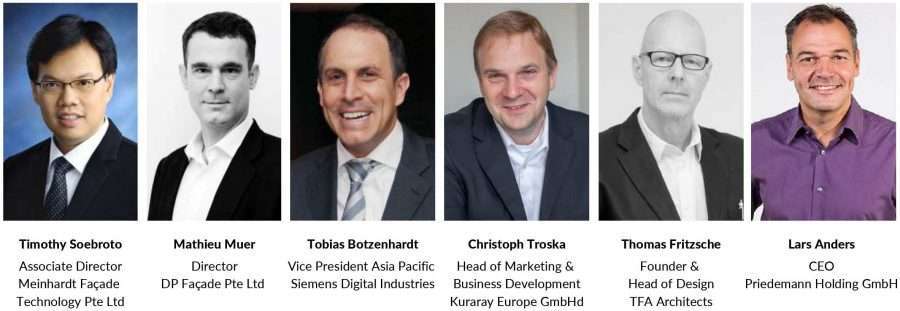
Conference Sponsors

adrian.tan@mmiasia.com.sg
